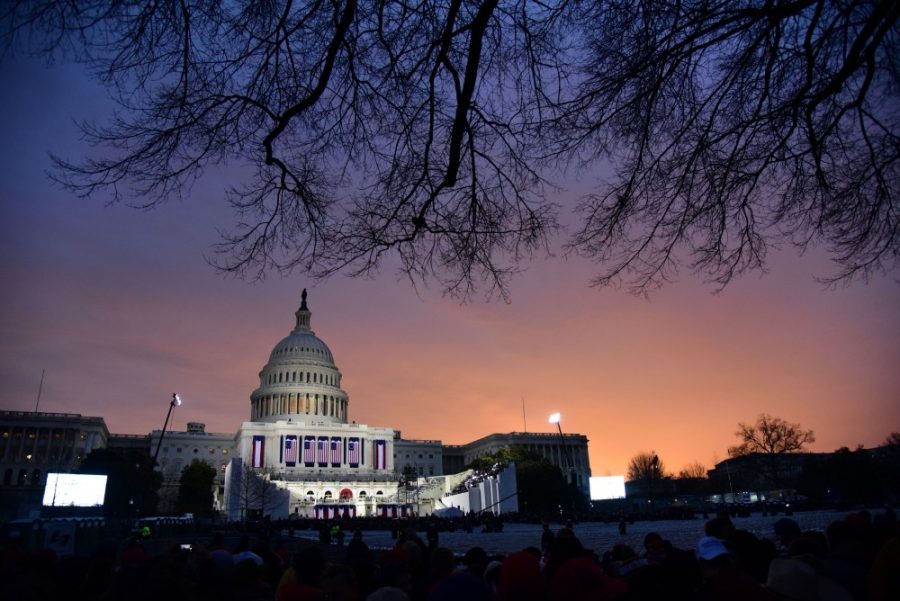There were laughter, tears, hurt, feelings and walls. No, I’m not talking about this season’s “The Bachelor” promo. I’m talking real deal government no worky no more. Sorry, the old government can’t come to the phone right now, she’s literally dead. Here’s a step-by-step breakdown of all the juicy details on this week’s episode of “Democracy as we know it is crumbling”.
Let’s talk terms. A government shutdown can occur for a ton of reasons, but for now we’ll chalk it up to Congress and the president not seeing eye to eye. What’s new? This kind of conflict breeds debate, and oh, doesn’t the sweet smell of freedom feel nice in your nostrils?
The budget year begins Oct. 1. The majority of government agencies receive their funding from the budget approved on this date, but several agencies operate on temporary extensions each with their own expiration date.
Continuing resolutions, also called stopgap bills, are put into effect as a bandage for when Congress cannot make a definite decision on budgets. These bills allow agencies to still receive funding, leaving them unaffected by the conflict in congress.
Congress must pass 12 appropriation bills to approve the expenses for the new budget year. This year, Congress was only able to pass 5 out of the 12 without compromising. All budgets expired, including stopgap bills, on Dec. 21, 2018.
RELATED: Religious studies professor selected for prestigious program
Okay, I’m done sounding like a textbook; now that you have the backstory, here comes the fun part.
President Trump made it clear through social media and his negotiations with Congress that he would not approve any budget without money for … the wall (gasp!).
The president took to his favorite corner of the internet and addressed the humble American public — we love a sloppy sister. Trump braved threats of a coming shutdown and said he would declare a state of national emergency to bypass Congress if they did not cough up five billion in Trump change (I came up with that one all by myself).
The government was in full Britney mode 800,000 unpaid government employees later. Homegirl was cold, out in the rain, no shoes, in need of a detox. The answer? Bipartisanship. But who am I to say? I’m just a reporter. The enemy — gasp, again!
Un-fun fact: There are two classifications that furloughed workers fall into. Government employees that continue to work for their agencies unpaid are called “excepted.” Those who are not currently working are, surprisingly, called “non-excepted.”
RELATED: OPINION: Government shutdowns are a destructive tool
Excepted employees are allowed to continue working unpaid because their jobs involve public safety. Their pay is assured through legislation, but those who are deemed “non-excepted” have not been given the same promise.
For 35 days the American people walked through the desert.
Good news — blessed keeper of liberty Nancy Pelosi announced that the government re-opened Friday, Jan. 5. Alas, the government must come to a consensus by Feb. 15 or close down once again.
Trump twiddled his thumbs and took to Twitter, stating, “this was in no way a concession, it was taking care of millions of people who were getting badly hurt.”
“In 21 days, in no deal is done, it’s off to the races,” the president said. Hopefully, this horse can still pay the bills.
As for our unsung heroes of the shutdown, excepted government employees will receive payment due to legislation enacted Jan. 17. According to the bill, back pay is to be provided “at the earliest date possible after the lapse in appropriations ends, regardless of scheduled pay dates.” Pretty concise if you ask me.
Senate Majority Leader Chuck Schumer and Speaker of the House Pelosi have confirmed that they will not compromise on the $5 billion baby. “Have I not been clear on the wall,” said Pelosi on Jan. 25. I think she might just be.
Thanks for tuning in, and see y’all on Feb. 15.
Follow Maya Noto on Twitter









